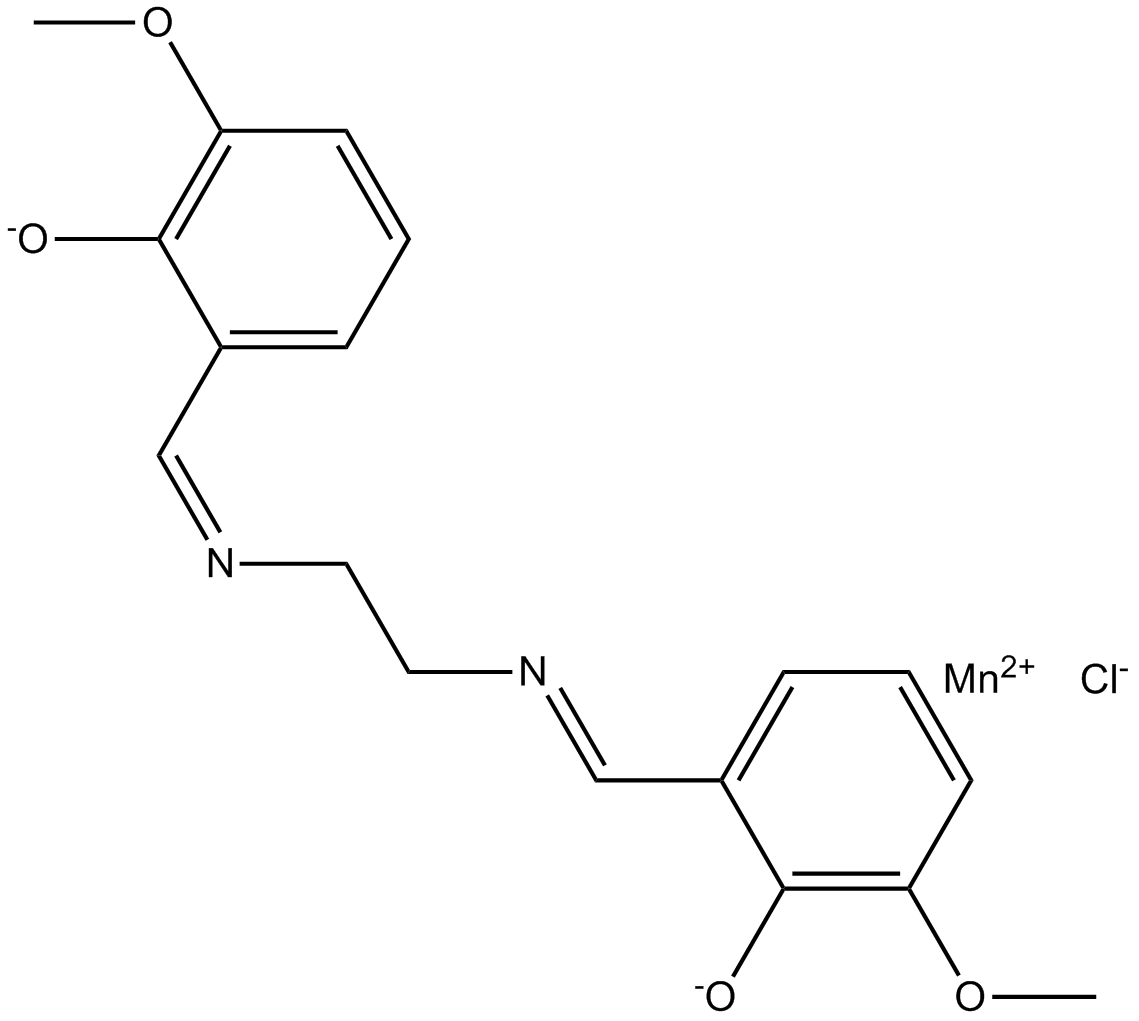EUK 134 |
| Catalog No.GC10089 |
Salen-manganese complexes;SOD mimetic
Products are for research use only. Not for human use. We do not sell to patients.

Cas No.: 81065-76-1
Sample solution is provided at 25 µL, 10mM.
EUK 134, a synthetic superoxide dismutase (SOD)/catalase mimetic, has exhibited potent antioxidant activities and inhibited the formation of β-amyloid and related amyloid fibril.
In vitro:EUK-134, a salen-manganese complex, showed potent catalase and cytoprotective activities and SOD activity. After middle cerebral artery occlusion, EUK-134 administration at 3 hr significantly reduced brain infarct size, with the highest dose apparently preventing further infarct growth[1]. Administration of EUK 134 (20 μM) prevented Aβ-induced microglial proliferation in vitro[2]. In human neuroblastoma cell line SK-N-MC, pre-treatments with EUK134 protected cells against H2O2-induced oxidative stress through inhibition of MAPK pathway in a dose-dependent manner.EUK134 also decreased the expression of pro-apoptotic genes p53 and Bax and enhanced expression of anti-apoptotic Bcl-2 gene [3]. Incubation of human amylin with EUK-134 significantly inhibited amyloid formation at two molar ratios of 1:1 and 5:1 (drugs to protein)[4].
In vivo:Compared to the vehicle-injected rats, the EUK-134-treated group at doses of 0.5 and 5.0 μmol/kg (0.25 and 2.5 mg/kg, respectively) exhibited infarct volumes that were significantly lower than those of vehicle-injected rats. At 5.0 μmol/kg, EUK-134 reduced the infarct volume by 90% when compared with that of the vehicle controls [1].EUK-134 protected most of the vulnerable neurons from excitotoxic cell death.EUK-134 significantly reduced (P< 0.05) KA-induced neuronal damage in CA1 (22% of total neurons), an almost complete protection in CA3 (7%) and piriform cortex (14%), indicating that EUK-134 prevented most but not all neuronal damage resulting from KA-induced seizure activity [5].
References:
[1]. Baker K, Marcus C B, Huffman K, et al. Synthetic combined superoxide dismutase/catalase mimetics are protective as a delayed treatment in a rat stroke model: a key role for reactive oxygen species in ischemic brain injury[J]. Journal of Pharmacology and Experimental Therapeutics, 1998, 284(1): 215-221.
[2]. Jekabsone A, Mander P K, Tickler A, et al. Fibrillar beta-amyloid peptide Aβ 1–40 activates microglial proliferation via stimulating TNF-α release and H 2 O 2 derived from NADPH oxidase: a cell culture study[J]. Journal of neuroinflammation, 2006, 3(1): 1.
[3]. Mohammadi M, Yazdanparast R. Modulation of H2O2‐Induced Mitogen‐Activated Protein Kinases Activation and Cell Death in SK‐N‐MC Cells by EUK134, a SalenDerivative[J]. Basic & clinical pharmacology & toxicology, 2011, 108(6): 378-384.
[4]. Bahramikia S, Yazdanparast R. Inhibition of human islet amyloid polypeptide or amylin aggregation by two manganese-salenderivatives[J]. European journal of pharmacology, 2013, 707(1): 17-25.
[5]. Rong Y, Doctrow S R, Tocco G, et al. EUK-134, a synthetic superoxide dismutase and catalase mimetic, prevents oxidative stress and attenuates kainate-induced neuropathology[J]. Proceedings of the National Academy of Sciences, 1999, 96(17): 9897-9902.
Average Rating: 5 (Based on Reviews and 28 reference(s) in Google Scholar.)
GLPBIO products are for RESEARCH USE ONLY. Please make sure your review or question is research based.
Required fields are marked with *




















